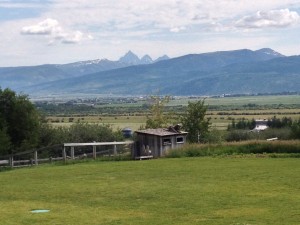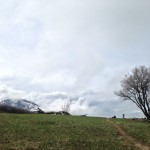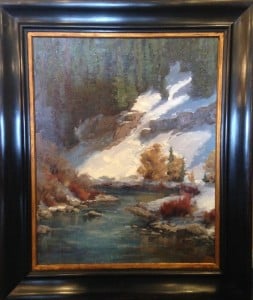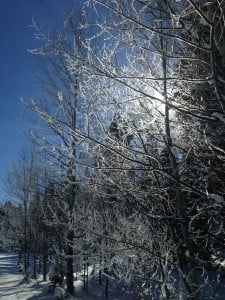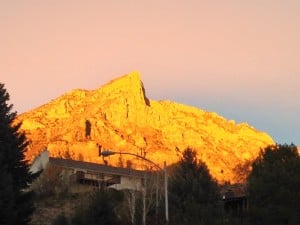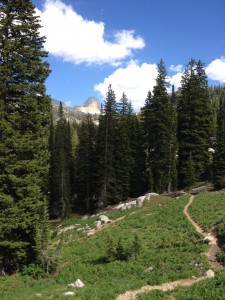 37 years ago I spent one month at the Bennion Boys Ranch in Victor, Idaho. It was the first of a total of four summers I would spend there, two as a camper and two as a counselor in my late teens. My parents sent me there, not because I was a troubled kid, but because they knew Lowell Bennion had a vision and a way with people that would benefit me. My brother had gone before me and loved the experience, so off I went. It seems more rare nowadays for parents to send their kids so far away for so long at such a young age. It was a work camp too, one where we spent four hours a day doing work on the ranch and in the community, painting widows’ houses, cutting trees and building fences, weeding a garden, tending horses, etc. We also played. We fished, we camped, we rode horses. And in the evenings, we talked about life, we debated important topics, we learned how to be polite. I loved the work and, even more, I loved that country. If you don’t know the smell of western wildflowers, the sound of mountain water, or the feel of the wind through aspen trees, you don’t know this country as well as you should.
37 years ago I spent one month at the Bennion Boys Ranch in Victor, Idaho. It was the first of a total of four summers I would spend there, two as a camper and two as a counselor in my late teens. My parents sent me there, not because I was a troubled kid, but because they knew Lowell Bennion had a vision and a way with people that would benefit me. My brother had gone before me and loved the experience, so off I went. It seems more rare nowadays for parents to send their kids so far away for so long at such a young age. It was a work camp too, one where we spent four hours a day doing work on the ranch and in the community, painting widows’ houses, cutting trees and building fences, weeding a garden, tending horses, etc. We also played. We fished, we camped, we rode horses. And in the evenings, we talked about life, we debated important topics, we learned how to be polite. I loved the work and, even more, I loved that country. If you don’t know the smell of western wildflowers, the sound of mountain water, or the feel of the wind through aspen trees, you don’t know this country as well as you should.
That place and the man, Lowell Bennion, who started the ranch left an indelible impression on me. It is safe to say it was a spiritual experience, the first of its kind for me, to stand in the middle of the wilderness at such a young age and sense how little I mattered in the midst of so much beauty. For some reason though it didn’t diminish me. It made me feel more humble, more grateful, and more hopeful about the prospect of a life in this body on this green earth. I sensed there was love for all that beauty, not only in my own heart, but in the heart and mind of a Creator. I remember the sight of the backside of a black bear, rumbling away from us through the forest while we stood by a rushing creek of ice cold white water, cold enough to make your hands numb if you left them in too long. I have had a vision of that stream and of that bear in my mind’s eye for the better part of three decades. I also remember a cold mountain lake and a trail passing by it below a high ridge where we would climb to what was called The Wall, an enormous mesa that rose to 11,000 feet and left you standing across from the Tetons at a two thousand foot cliff. We did like all boys would do and we peed off the edge. It was a rite of passage, I guess.
I did the hike a few times, as a camper for two summers and then later as a counselor in my late teens. I went back one more time with some of my friends a few years later, the summer of 1987 before I met Amy. I talked about this hike with her for years, dreaming of a return. Recently when we dropped two of our children off at the same camp and a neighboring one for girls that build on Lowell Bennion’s legacy, Amy and I found ourselves with two days to spend in Teton Valley. At Amy’s urging, we decided to do the hike.
Surprisingly, I could remember very little of the hike in my mind’s eye, other than those anchoring details. I simply could not project my mind forward to what we would see or experience. All I could remember was the sight of that bear, the cold rushing water, the lake, and the ridge at the top, but as I took each step forward starting at the trailhead, memories of that moment on the trail would come back, as if I were walking into the past, as if all that was present was suddenly also what was already the past.
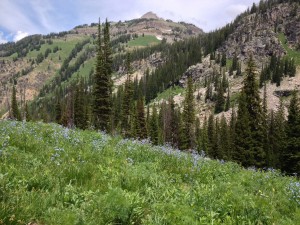
I thought of the paradox that I was moving forward many years later, repeating my steps from decades before and I was simultaneously recovering memories of the past while building new ones. Maybe that is the way of it with memories. Maybe they are never once but always layered and only recovered by the act of covering them over again with new experience. They emerge in the context of comparison. They cannot prophesy what is to come, but they can make the present so much more saturated with meaning. I was speechless as we passed dozens of cascades falling from the cliffs around us, passing fields of waist-high wildflowers, as we drew nearer and then farther away from the roaring stream,  as we saw a valley opening up before us now to forest, now to open spaces of granite, and finally to fields of snow and so many small springs that it seemed the whole world was flowing water.
as we saw a valley opening up before us now to forest, now to open spaces of granite, and finally to fields of snow and so many small springs that it seemed the whole world was flowing water. 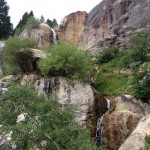 We sat at one point and stared at a small water fall, and maybe it was the optical illusion of the moving water against the static rock, but it seemed the rock, the trees, the entire body of the earth was on the move, respiring and shifting its weight in the lazy sun.
We sat at one point and stared at a small water fall, and maybe it was the optical illusion of the moving water against the static rock, but it seemed the rock, the trees, the entire body of the earth was on the move, respiring and shifting its weight in the lazy sun.
As we rose to 9000 feet, Amy and I lost the trail a few times as a result of the snow only to find it again, but it got to the point where the map was of no use, my memory was of no use, and even exploration of the unknown was risky. So we retraced our steps to camp.
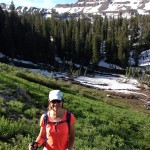
As we turned back, I saw the trail that took off up the face of a steep slope to the east where The Wall awaited us. We spent the night and launched up the slope first thing in the morning. There was more snow, more difficulty finding the trail, and I struggled to find any evidence around me of where I had been before and where we therefore might need to go.
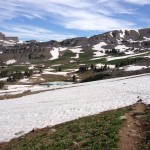
And then I saw Sunset Lake, the lake I had seen so many years before and the sight of the Tetons peeking out above The Wall we had to ascend. We were going to get there after all. I kept moving back and forth between the past and the present in my mind and by the time we arrived past the small patches of brave wild flowers that thrived in harsh and unlikely places like this shelf, I was having a brand new experience altogether.
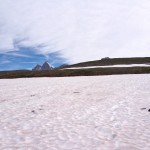
I don’t know what it is about the smallness one feels in such places, but I treasure it like the warmest fire of significance. I say it again: it does not diminish us to discover our relative nothingness. That’s because we experience it as awe and wonder, an experience that I consider to be our most rare of human privileges, second only to the privilege of sharing awe with the ones we love. It was challenging to return, to retrace our steps and find our way back to where we had been. But memory was fresh enough, landmarks clear enough, we made it without incident. We felt utterly comfortable now in a place whose beauty was so raw and so wild, we hadn’t been sure we were welcome.
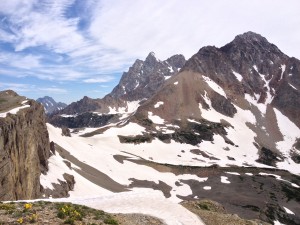
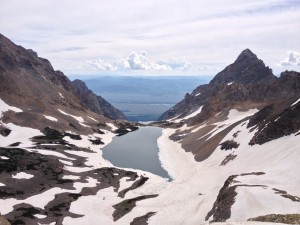
Later, rejuvenated, Amy and I returned to the boys ranch to pick up our son, Sam, and I asked Amy to come and see Lowell’s shed, his old office where he worked and slept. It is preserved now as a small and simple tribute to his memory.
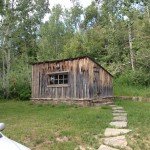
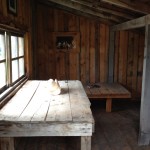 I opened the door and saw the very same desk upon which he worked, where I had often talked to him about things when I was one of his counselors and seen him occupied not only with the affairs of the ranch but with the affairs of the world. I remember seeing the desk strewn with articles about capital punishment and other issues of the day. He was thinking as well as crunching numbers, but he also had time to talk to me about the recent loss of my brother to suicide. I wept the minute I opened the door. I saw his old hat on the desk and photos on the wall. We looked around the room.
I opened the door and saw the very same desk upon which he worked, where I had often talked to him about things when I was one of his counselors and seen him occupied not only with the affairs of the ranch but with the affairs of the world. I remember seeing the desk strewn with articles about capital punishment and other issues of the day. He was thinking as well as crunching numbers, but he also had time to talk to me about the recent loss of my brother to suicide. I wept the minute I opened the door. I saw his old hat on the desk and photos on the wall. We looked around the room.
Amy caught it at first and asked, “Isn’t that you?” I stared at one picture of Doc, as we called him, behind the A Frame counter helping to serve porridge to us boys. And there was a blond boy with glasses in a blue shirt. I didn’t recognize his head or face, but I knew the shirt and knew it had to be me. And then slowly I merged my memory with the image in front of me until, after several disbelieving minutes of staring, I could see myself in that image. Yes, it was me at the ripe age of twelve. But what strange work it had been just to know it was myself!
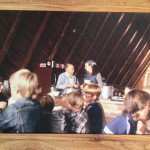
I don’t consider myself blessed with a good memory. It’s pretty lousy actually. But I guess I try to make up for it with imagination. There are so few landmarks that stick in my mind, so few experiences that I can definitely remember shaped me in important ways. I can’t remember too many things from that first summer in the mountains of Idaho. I don’t remember many names or stories. But I knew I had to remember the experience for the rest of my life. One night at dusk, I was in a black Camero with one of the counselors, coming back from who knows what activity. We were listening to Guess Who on his 8-track player (I think it was “American Woman”) and I said to myself as I stared at a smashed bug on his window shield to help anchor my feelings, “Never, ever forget this. Remember this for the rest of your life.” Surely I did such a silly thing because I could feel that sometime momentous was happening. I was coming alive, as if emerging from a cocoon and I sensed something about it all was terribly, irrevocably significant. That it meant something to be alive. And I might as well mark it with a dead bug on a windshield. Or with the backside of a bear fleeing the sound of boys in the woods. Or a lake by a trail beneath a rocky shelf. These are the most fleeting and unweighty of anchors we use to hold ourselves down on the ground, to assure ourselves that we have indeed passed through this place, in this time, in this body. Why does this life feel so often like a dream? Why are we so desperate to cling to what is real?
This much I know: I am more alive when walking along the trail of memory and it doesn’t hurt when that trail runs beside mountain streams among the wildflowers. Forgive the indulgence, but the only decent thing seems to be to share the trail with as much reverence as I can.
